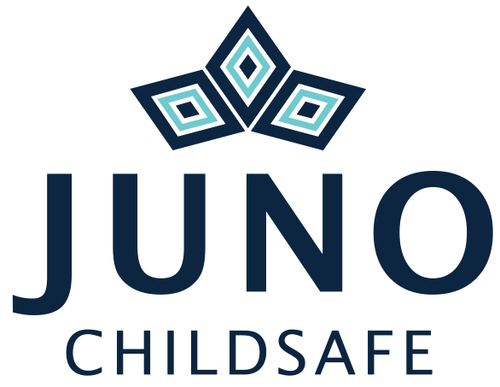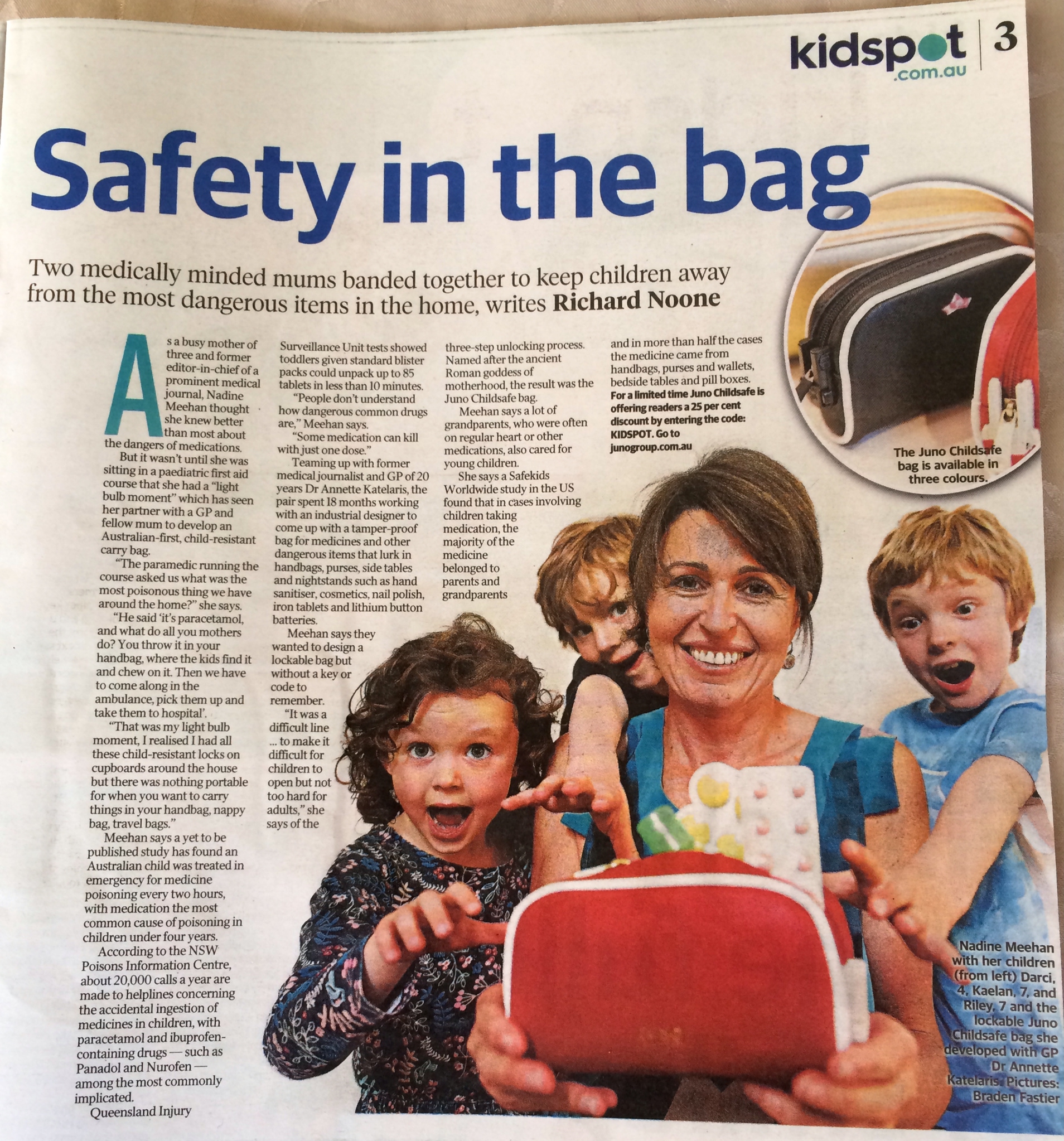Published in Kidspot, The Daily Telegraph, January 16, 2016.
Two medically minded mums banded together to keep children away from the most dangerous items in the home, writes Richard Noone
As a busy mother-of-three and former editor-in-chief of a prominent medical journal, Nadine Meehan thought she knew better than most about the dangers of medications.
But it wasn’t until she was sitting in a paediatric first aid course did she had a “light bulb moment’’ which has seen her partner with a GP and fellow mum to develop an Australian-first child-resistant carry bag.
“The paramedic running the course asked us what was the most poisonous thing we have around the home?’’ she says.
“He said ‘it’s paracetamol and what do all you mothers do? You throw it in your handbag, where the kids find it and chew on it. Then we have to come along in the ambulance, pick them up and take them to hospital’.
‘That was my light bulb moment, I realised I had all these child-resistant locks on cupboards around the house but there was nothing portable for when you want to carry things in your handbag, nappy bag, travel bags.’’
Meehan says a yet to be published study has found an Australian child was treated in emergency for medicine poisoning every two hours, with medication the most common cause of poisoning in children under four years.
According to the NSW Poisons Information Centre about 20,000 calls a year are made to help lines concerning the accidental ingestion of medicines in children with paracetamol and ibuprofen-containing drugs – such as Panadol and Nurofen – among the most commonly implicated.
Queensland Injury Surveillance Unit tests showed toddlers given standard blister packs could unpack up to 85 tablets in less than 10 minutes. “People don’t understand how dangerous common drugs are,’’ she said. “Some medication can kill with just one dose.’’
Teaming up with former medical journalist and GP of 20 years Dr Annette Katelaris, the pair spent 18 months working with an industrial designer to come up with a tamper-proof bag for medicines and other dangerous items that lurk in handbags, purses, side tables and nightstands such as hand sanitiser, iron tablets and lithium button batteries.
Meehan says they wanted to design a lockable bag but without a key or code to remember.
"It was a difficult line ... to make it difficult for children to open but not too hard for adults,’’ she says of the three-step unlocking process.
Named after the ancient Roman goddess of motherhood, the result was the Juno Childsafe bag.
Meehan says a lot of grandparents, who were often on regular heart or other medications, also cared for young children.
She says a Safekids Worldwide study in the US found in cases involving children taking medication, the majority of the medicine belonged to parents and grandparents and in more than half the cases the medicine came from handbags, purses and wallets, bedside tables and pill boxes.
* For a limited time only Juno Childsafe is offering readers a 25% discount by entering the code: KIDSPOT. Go to junogroup.com.au

